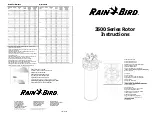
© 2012 by Proceq SA
8
2.7. Testing curved surfaces
The instrument works properly only when the ball indenter at the front of the impact body is
precisely at the end of the tube at the moment of impact. When concave or convex surfaces
are tested, the ball indenter either does not entirely leave the test tube or comes out too far. In
such cases, replace the standard support ring by a specially suited ring to do the testing (see
“Accessories” or contact your local Proceq representative).
2.8. Testing thin-walled samples e.g. tubular samples and pipes
Pipes and tubes sometimes have mass distributions that can affect the result of the Leeb hard-
ness test. Mainly, this is due to vibrations induced when the impact body hits the test point,
resulting in unwanted energy absorption. During on-site testing of pipelines, for example, the
test locations cannot be supported by solid worktops or clamped.
To benefit from the convenience and speed of the Leeb test, the user can make use of a cus-
tom conversion after conducting the following calibration procedure:
• Data pairs are measured on reference samples. For the Leeb HLDL reference
measurements, it is crucial that they are done on parts that are installed in the same way
as those to be tested on-site. For example, two pipe samples “Pipe type 123 soft” (730
HLDL / 255 HB) and “Pipe type 123 hard” (770 HLDL / 310 HB) are measured using the
Equotip 3 impact device DL and a Brinell tester, respectively.
• The original HLDL-HB conversion curve for “1 Steel and cast steel” is now adapted using
the two data points. The detailed procedure on how to create custom conversion curves in
the Equotip 3 is given in section 7.1. “Custom conversion curves”.
• To measure pipe type 123 in future, it can be selected via material group “Customer
defined” – “Pipe type 123”, using the hardness scale “HB Brinell”.
i
Note:
The user needs to determine and qualify the adaptation of conversion
curves for each tube diameter and wall thickness. Guides to the procedure are
provided in Nordtest Technical Report Series 424, Reports 99.12/13 and ASME
Final Report CRTD-91.









































